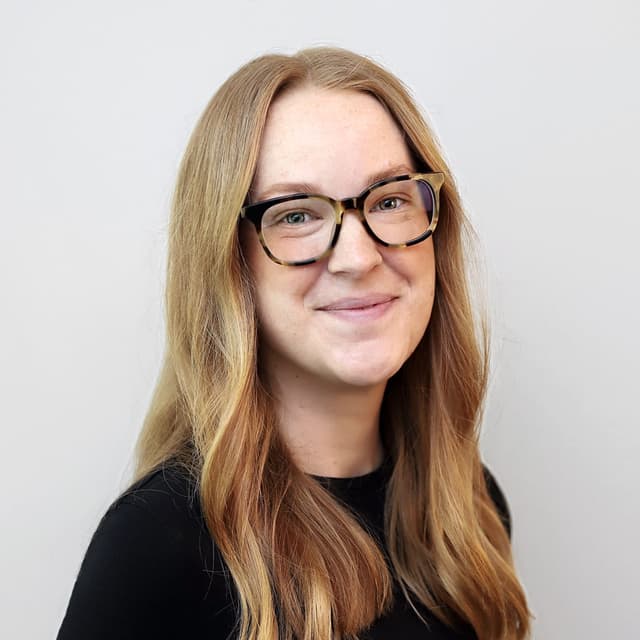Design for recycling
How recyclability, criteria and reporting are interconnected
Our advisory approach to design for recycling is based on how recyclable a packaging material is, regardless of the material type. We do not advocate one material over another. As a producer, you can assess the recyclability of a packaging material using our clear criteria and design guidelines. The aim is to contribute to increased material recycling of packaging, resulting in more circular material flows and reduced need for virgin raw materials.Technological advances or changes in collection and sorting affect whether a package is recyclable. We stay continuously updated on changing conditions at our partners’ facilities as well as current and upcoming legislation, and we adapt our advice and fee criteria accordingly.
– We strive for high-quality, circular material recycling where the material can be reused multiple times, thanks to preserved material quality. In linear recycling, the material is recycled into lower quality without circulation, eventually leading to incineration. The current packaging regulation does not distinguish between linear and circular recycling. However, the EU’s Packaging and Packaging Waste Regulation (PPWR) places greater emphasis on circularity, for example by requiring high-quality recycling and the use of recycled raw materials in new plastic packaging, says Einar Ahlström, materials specialist at Näringslivets Producentansvar.
Criteria help customers classify packaging when reporting
Differentiated packaging fees are a tool to steer development towards increased recyclability and maintaining high material quality throughout the recycling process. This means lower fees for packaging designed for recycling, and higher fees for packaging that is difficult or impossible to recycle.
Using our criteria for plastic and paper packaging, customers can determine the appropriate fee level for reporting. For glass and metal, there is no differentiation or criteria; they are currently reported at a single fee level, unlike plastic which has three levels and paper which has two.
– It is part of the producer responsibility to report packaging volumes. The idea is that our customers should be able to report their packaging under the correct item number based on our criteria, says Einar Ahlström.
Anyone reporting packaging at the green fee level must be able to demonstrate that the packaging meets the criteria, which can be difficult if the producer does not know what the packaging contains. Therefore, it is important to ask the right questions to suppliers and request documentation that confirms the packaging meets the requirements for the relevant fee level, as this also affects how the packaging should be reported.
– We know this is challenging for some producers, especially smaller companies with limited resources. It is fine to use our criteria as a starting point, but to simplify further, we are looking into developing support for supplier requirements. In a few years, regulations in PPWR will require suppliers to understand what is needed to qualify for levels A, B and C. This will make things easier for companies, but it will take time before it becomes reality, says Love Pallon, materials specialist at Näringslivets Producentansvar.
At NPA, we have chosen to follow RecyClass criteria, which are based on publicly available scientific studies. We see it as beneficial that RecyClass represents a wide range of stakeholders—recycling industry, packaging manufacturers and brand owners—which sets them apart from other certification organisations.
We coordinate the criteria for plastic packaging with Svensk Plaståtervinning, which receives our share of collected household plastic packaging, and make local adjustments when needed. Paper packaging is less complex than plastic, and here we follow the Swedish Environmental Protection Agency’s regulations. We review the criteria annually and adjust as needed.
New EU standards for recyclability in progress
Work is currently underway within the European standardisation organisation (CEN) to develop standards (EN18120) for Design for Recycling of plastic packaging, as well as corresponding technical specifications for other packaging materials. The idea is that these standards will form an important basis for the delegated act (supplementary legislation to PPWR, to be published in 2028), which will describe how packaging should be designed to meet recyclability requirements. However, it remains to be seen how the EU Commission will use the developed standards and specifications.
– On the paper side, we can expect our criteria to become more comprehensive once the delegated act is in place. It will clarify the requirements a package must meet for the different rating levels A, B and C, and will be fee-determining from 2030. This legislation will refer to upcoming standards in some way, but we won’t know how until 2028. The standards also reduce the scope for interpretation that exists today, for example by listing what must not be included in packaging, says Love Pallon.
Assessment of recyclability
The recyclability of a package can be determined by analysing its design and material composition.
– When a customer wants help assessing recyclability, we need photos and material specifications for the packaging in question. We look at things like printing, transparency, colouring, material and barriers. If the packaging consists of laminated materials, we also need information about the adhesives used and their concentration. The more complex a package is, the more information is needed to assess its recyclability, says Einar Ahlström.
Sorting tests for plastic packaging
Most packaging does not need to be tested to determine whether it can be sorted at the Site Zero sorting facility operated by Svensk Plaståtervinning. However, tests may be needed if the packaging is metallised or black, as these may not be detectable by the NIR equipment at Site Zero.
Contact your account manager if you need to test your packaging or want certification of its sortability!
Packaging design requires more considerations than recyclability
When developing packaging, producers must make various trade-offs and priorities, which may mean they cannot choose the packaging with the lowest fee. For example, extending the shelf life of a food product may be more important than full recyclability. In theory, all packaging can be made recyclable, but this may come at the expense of other functions.
There are innovative materials and compositions that are recyclable, but it is important to emphasise that for recycling to happen in practice and at scale, collection must reach a critical mass to make it worthwhile to collect, sort and recycle the material. Establishing separate recycling streams is costly.
– If a producer hears about a new and innovative material described as recyclable, they must find out whether it can be collected, sorted and recycled in practice—not just in theory. Just because a package is recyclable does not mean it will actually be recycled if separate sorting and treatment are lacking, says Love Pallon.
Coworkers
Our materials specialists

Einar Ahlström
Materials specialist

Love Pallon
Materials specialist

Ingrid Öberg Månsson
Materials specialist (parental leave)
More Design for recycling
NPA participates in standardization work for packaging
As additional requirements and regulations for packaging and producers are introduced within the framework of the new Packaging and Packaging Waste Regulation within the EU (PPWR), it is important for NPA to be involved in the development of upcoming standards for recycling packaging.
LUMENE’s new moisturiser jar uses 44% less packaging material
LUMENE, a leading Nordic beauty brand specialised in skincare, face makeup and colour cosmetics, has made a commitment towards a more sustainable future, something that is visible in their recently launched 50 ml moisturiser jars.
“Producer responsibility gives us an incentive to develop”
Pågen is Sweden's leading bakery in packaged fresh bread, yeast, coffee bread, rusks, sausage and hamburger bread. They have around 30 different breads in their range, with brands such as LingonGrova, Levain and Hönö. In total, Pågen bakes around 50 different products and their bread is sold in Sweden, Denmark, Finland, Norway, Iceland and Germany.